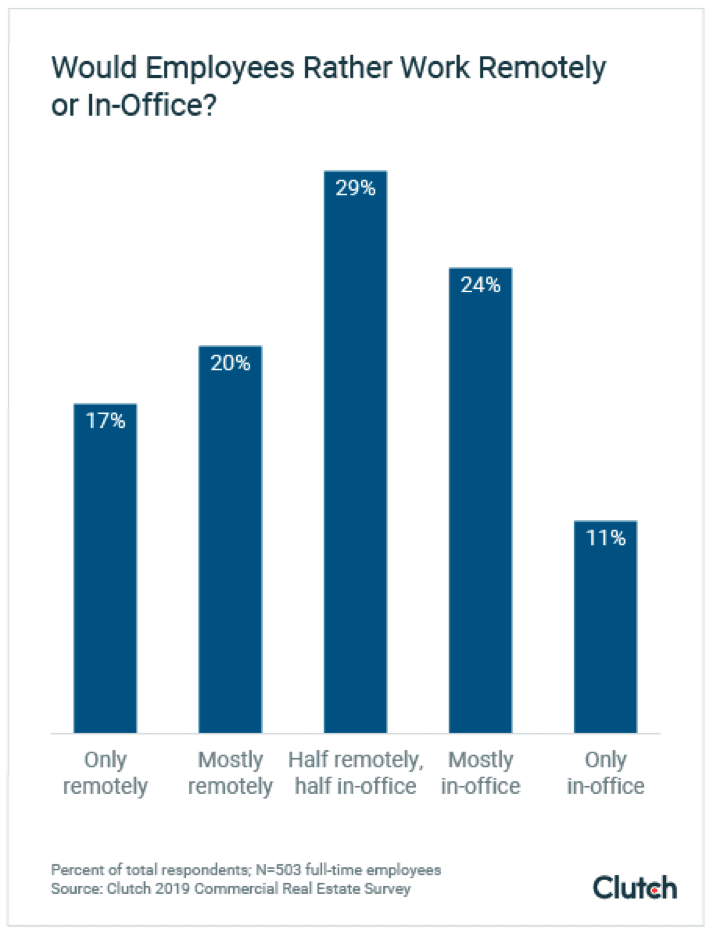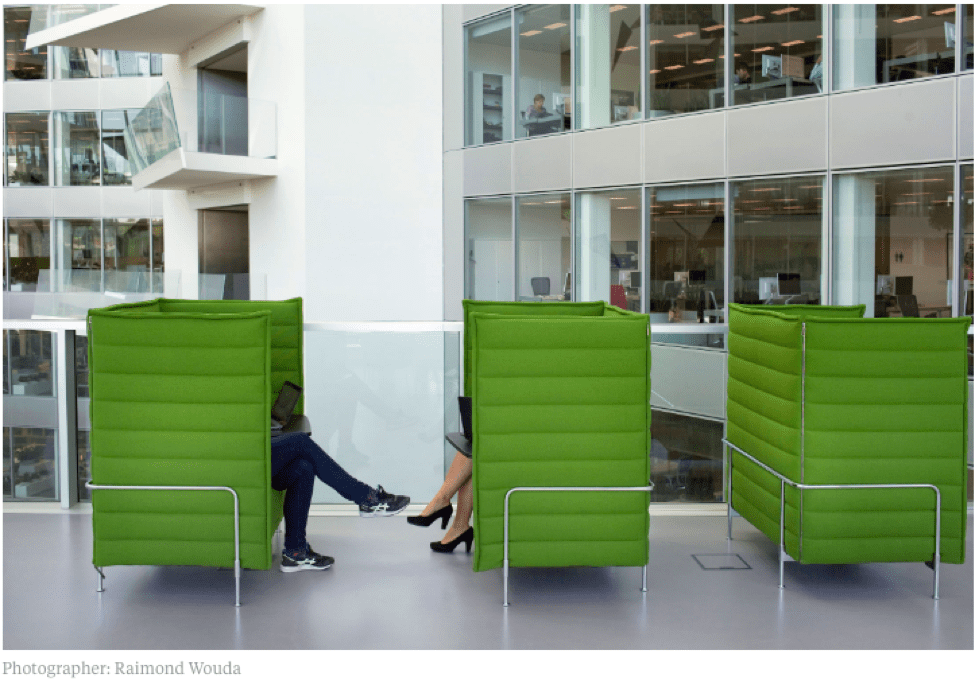When we study what employees want in an office space, the research also reveals what they don’t want.
Recent trends such as remote work and open seating arrangements may fare worse than expected.
According to Clutch, there are a few key office types that employees enjoy less than others.
If you’re moving into a new office or redesigning an existing one, ensure you’re remaining mindful of employee preferences.
This article reveals little-known office space blunders — and how to avoid them.
1. Working From Home Is Appealing, But Employees Don’t Want a Remote Office
While a remote office conserves resources, it isn’t employees’ first choice.
In fact, the Clutch survey reveals that 83% of workers don’t want to work remotely most of the time.
Workers value the face-to-face interactions facilitated by an office. They also prefer to work in an area that’s designed to cultivate productivity.
At the same time, only 11% of survey respondents want to work in an office 100% of the time.

According to 53% of respondents, the optimal situation is an in-office environment that offers remote work options up to half of the time.
It’s a myth that only managers prefer employees to work in-office. Employees also appreciate the cultural benefits of seeing their peers each day.
Don’t underestimate the value of an office that’s custom-crafted for your workers. It’s important to offer remote options, but your teams’ primary workspace should be in a single, designated location.
2. Despite Open-Office and Remote Work Trends, Workers Don’t Want to Lose Their Assigned Space
The recent popularity of co-working spaces may lead managers to believe employees prefer open seating arrangements. However, the Clutch study shows that workers place a high value on a personalized desk to call their own.
In fact, the majority of survey respondents (53%) value their personal space more than any other office area.
Many innovative companies are answering the need for places to relax and socialize, but they should ensure workers’ personal space isn’t lost in the mix.
The Edge, which is the “most intelligent” building in the world uses hot desks, according to Bloomberg. The Deloitte employees who occupy the building aren’t assigned a desk.

Workers in The Edge store their belongings in a locker and move between different spaces throughout the day.
While many believe that this new fad will foster collaboration, a Forbes report explains how hot desking can wreak havoc on your company.
Providing an area that employees can personalize with their things creates a culture of belonging. Dedicating resources to each individual illustrates that the company prioritizes the quality of each employees’ work life.
Assigned desks can benefit all employees — even ones that work remotely part of the time.
In the Clutch study, Bethany Babcok, the owner of Foresite Commercial Real Estate, says if there isn’t a designated space for remote workers, it “sends the message that you belong at home, not here, and this isn’t your office.”
Forbes reports that the negative effects of hot-desking correlate with the size of a company. If your company is larger than 50 employees, you may want to listen to workers’ preferences and reserve a desk for each employee.
3. Employees Value Collaboration, But Not at Their Desks
Companies like WeWork have championed the need for collaborative workspaces. Socialization is important, but managers must ensure there’s also a quiet space for employees to focus.
Managers, though, need to ensure that collaborative areas don’t detract from workplace efficiency.
Providing headphones or low-level dividers may not be enough. Even cubicles can prove too distracting in close quarters.
Michael Arnold, a speaker, coach, and trainer, reports that the workspace has “reduced my creativity, privacy, and ability to effectively work.”
“We are supposed to be able to collaborate, but there is no privacy, so everyone wears headphones, and no one talks,” Arnold said.
According to Harvard Business Review, chance encounters and socialization can enhance performance. However, the design should be strategic, not haphazard.
In addition to conference areas, managers should ensure there is a reliable space where employees can focus. Attempting to mix socialization with concentration can harm both aims.
The solution lies in flexibility.
Management should listen to employees’ preference for private space, yet also understand the value in interdisciplinary collaboration.
A workspace that provides assigned desks in addition to open spaces will foster both productivity and peer-to-peer connection.
Don’t Make Assumptions — Consider Employees’ Preferences Before Designing Your Office
It may seem logical that employees would prefer a remote office, an innovative, open seating arrangement, and opportunities to socialize while working.
There is value in each of those options. However, research shows that employees want to work in-office most of the time at an assigned desk, as long as there is a separate, designated area to collaborate.
Your employees’ productivity is tied to their happiness at work. Instead of getting distracted by popular fads, consider employee preferences to ensure you’re supporting your workers.









